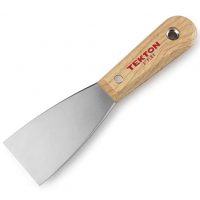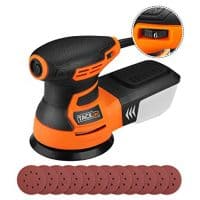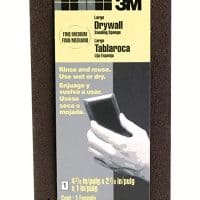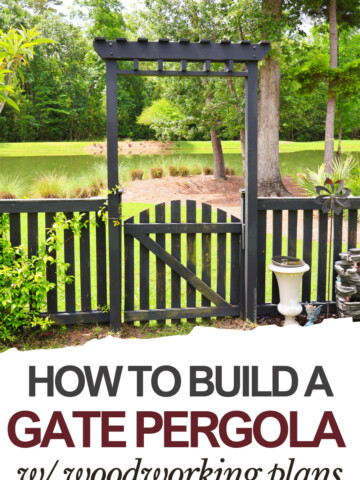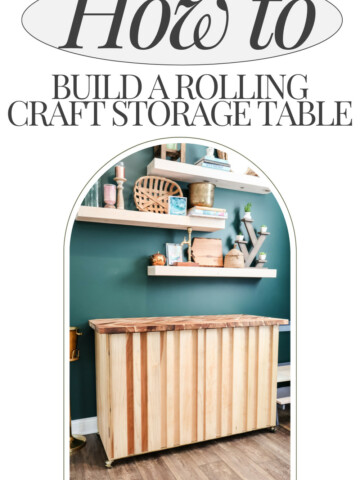Need to repair a damaged wood surface? You can DIY that! Here is a complete guide on how to use wood filler!
Whether you are building a new piece of furniture an have made an erroneous hole or you are repairing old wooden furniture, sometimes you need to patch a hole in wood.
Wood filler is often the best option for fixing small holes and cracks in wood surfaces.
This is because it is easy to use, dries pretty quickly, and is often stainable or at least paintable.
Wood filler is made for using on wood surfaces and can result in professional-looking repairs. It blends seamlessly with surrounding wood for a great patch job.
Let's dive into everything you need to know about how to use wood filler!
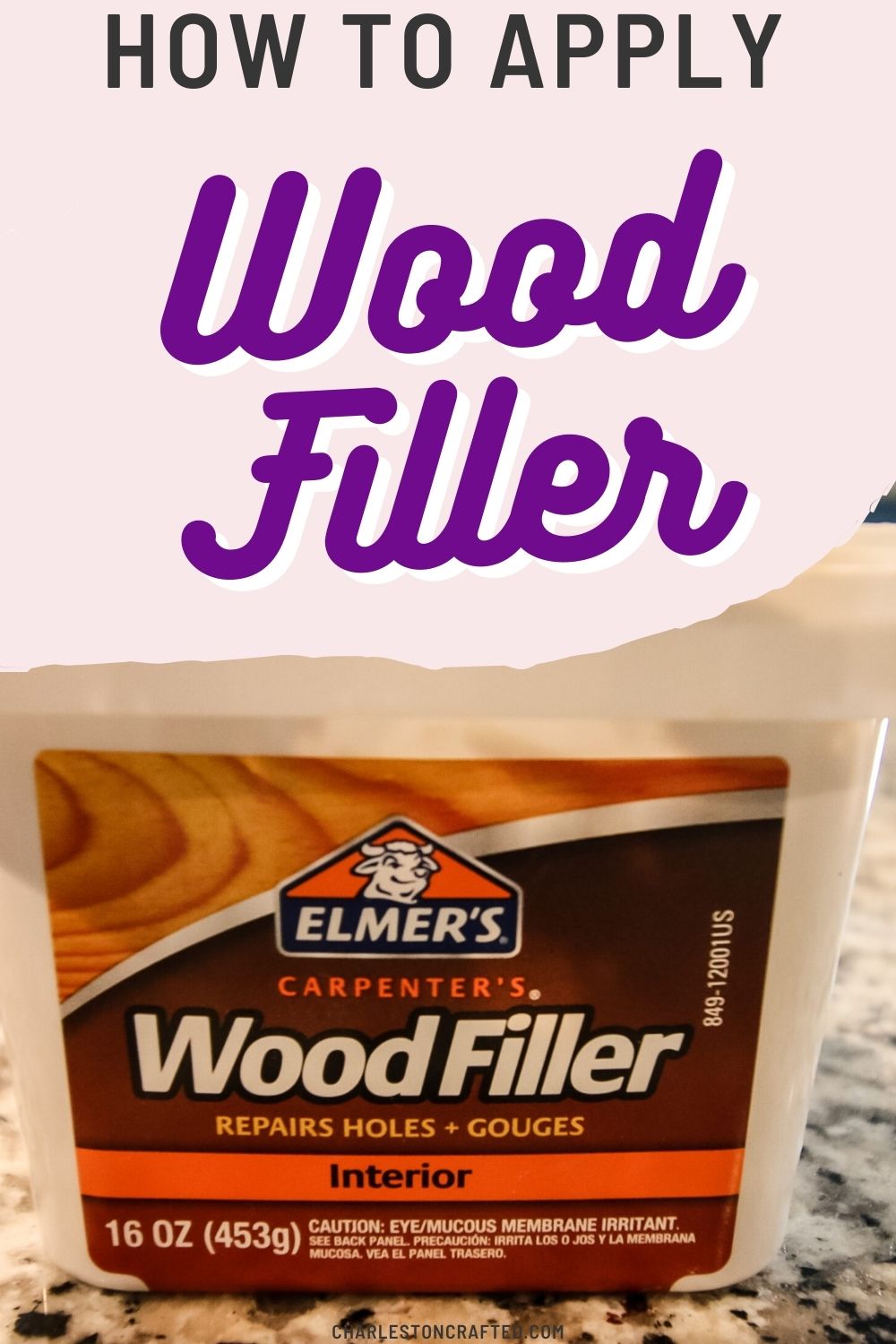
Understanding Wood Filler
Wood filler is a patching product that was designed specifically for wood surfaces. It is made from saw dust/tiny wood particles mixed with a binding agent: epoxy, latex, or cellulose.
Use wood filler to patch flat cracks or gaps in molding. Wood filler does a great job of smoothing flush because it is made to fill in flat gaps and joints on wood.
Wood filler provides a strong and durable bond, allows for seamless blending with surrounding wood, and is suitable for both interior and exterior wood projects.
Selecting the Right Wood Filler
It is important to choose the appropriate type of wood filler for a specific repair job.
- Water-Based Wood Fillers: easy to use, environmentally friendly, easy clean up, quick drying, low odor and low VOC.
- Solvent-Based Wood Fillers: made with acetone or mineral spirits and very durable, longer dry time, can use outdoors, super strong.
- Wood Epoxy Fillers: two part system that has to be mixed. Very stinky. Long cure time. Very strong and weather proof once dry.
Water-Based vs. Solvent-Based Wood Fillers
One of the biggest questions when deciding which wood filler to buy is whether you should buy water-based or solvent-based wood filler.
In general, water-based wood filler is the default. It is easy to apply, basically odorless, and creates a nice repaired surfaces on the wood. Water-based fillers can usually be stained or painted and are easy to sand smooth.
On the other hand, solvent-based wood fillers are made with something like epoxy mixed in. They are often 2 parts that have to be mixed prior to using the wood filler.
These wood fillers usually have a strong odor (because of the epoxy) and dry super hard and super durable. They are less likely to shrink or crack over time.
Epoxy-based wood fillers are usually paintable but NOT stainable.
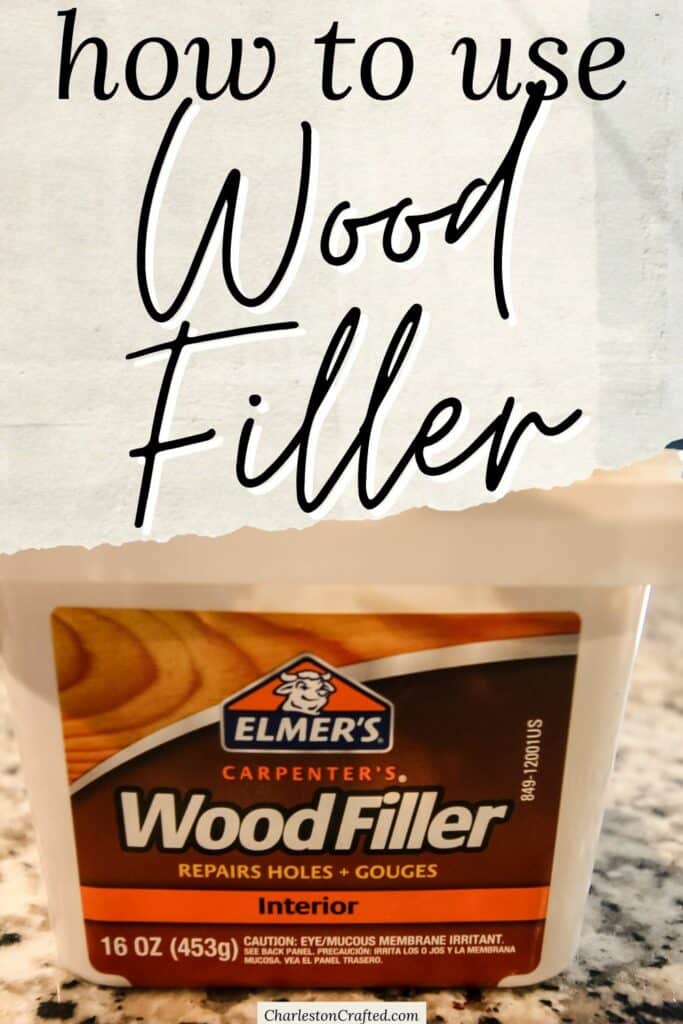
How to apply wood filler
Here is a step-by-step guide on how to apply wood filler to damaged wood.
Supplies needed
- Wood filler
- Putty knife
- 220 grit sandpaper
- cloth or rag
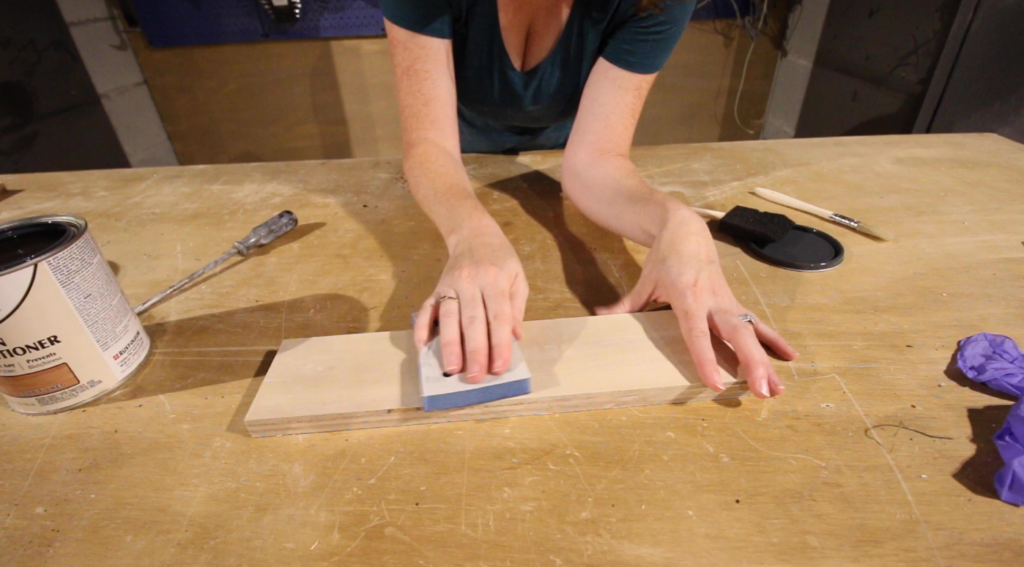
Step 1: Preparing the Wood Surface for wood filling
It is super important to prepare the wood surface before applying wood filler for optimal adhesion and a smooth finish.
Clean the area thoroughly, removing any dirt, dust, and loose debris. Wipe it clean with a tack cloth or similar lint-free cloth or rag.
Step 2: Mix the wood filler
I suggest wearing gloves starting at this step.
If you are using a 2-part wood filler, mix and combine them in accordance with the instructions on your container.
If you are using traditional one-part wood filler, it might still benefit you to give it a stir or mix. Especially if the container is not new, the top might be a bit crusty or have other consistency issues.
Stirring with a paint stir stick or putty knife for a few seconds is always a good idea!
Step 3: Apply the wood filler
Use your putty knife to scoop out a small amount of wood filler and apply it to the damages area. Be sure to press it in to fill holes in the wood - don't just skim the surface.
You want to get it in there deep enough that there is no air bubbles - it is 100% filled with wood filler.
Continue to apply, scraping the putty knife in the direction of the wood grain when you are finished.
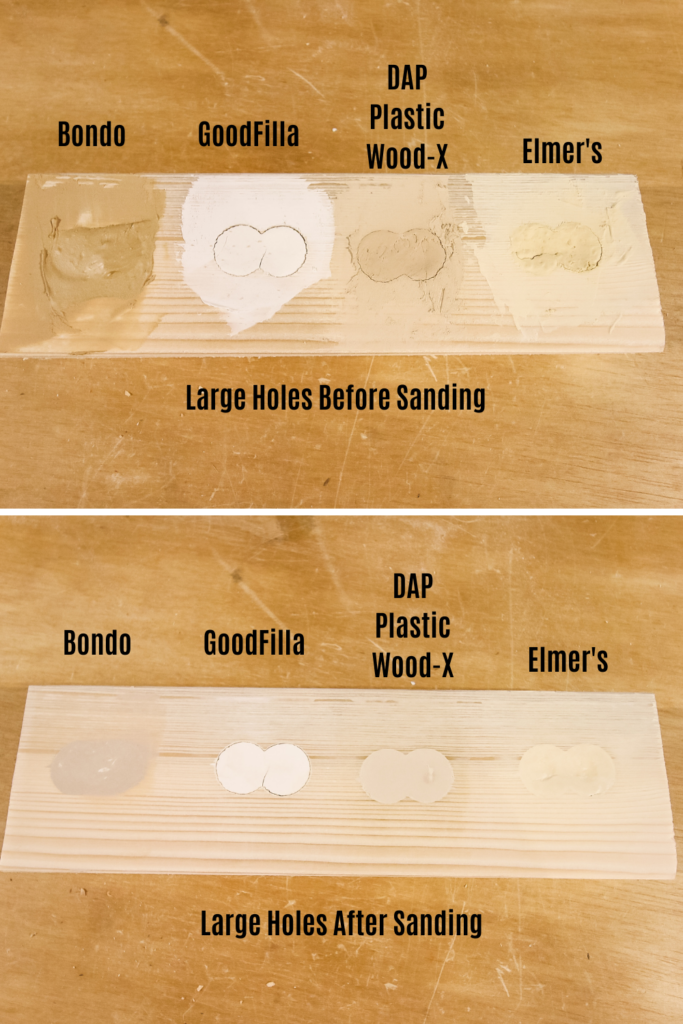
Step 4: Smoothing and Leveling
Smooth your putty knife over the top of the layer of wood filler to get a smooth and level finish.
Remember that wood filler shrinks as it dries. If you fill it perfectly flat with the surface, it is likely to shrink a bit. You can of course do this and then add another layer on top once it is dry.
Or, you can overfill very slightly. This will allow you to sand it smooth once dry, without any divot.
Explain the importance of properly leveling the filler to match the surrounding wood, avoiding overfilling or underfilling.
How long does it take for wood filler to dry?
Wood filler dry time varies by brand + specific product - always consult your can or bottle for proper dry time.
In general, water based wood fillers dry quickly, solvent and epoxy based wood fillers dry slower.
Temperature and humidity levels can effect dry time.
Even if the wood filler is dry to the touch, it may not be fully cured. Cure time is how long it takes wood filler to reach it's maximum hardness.
Water based fillers cure in a few hours, while others can take much longer. Check the back of the can and be sure your project is cured before handling it!
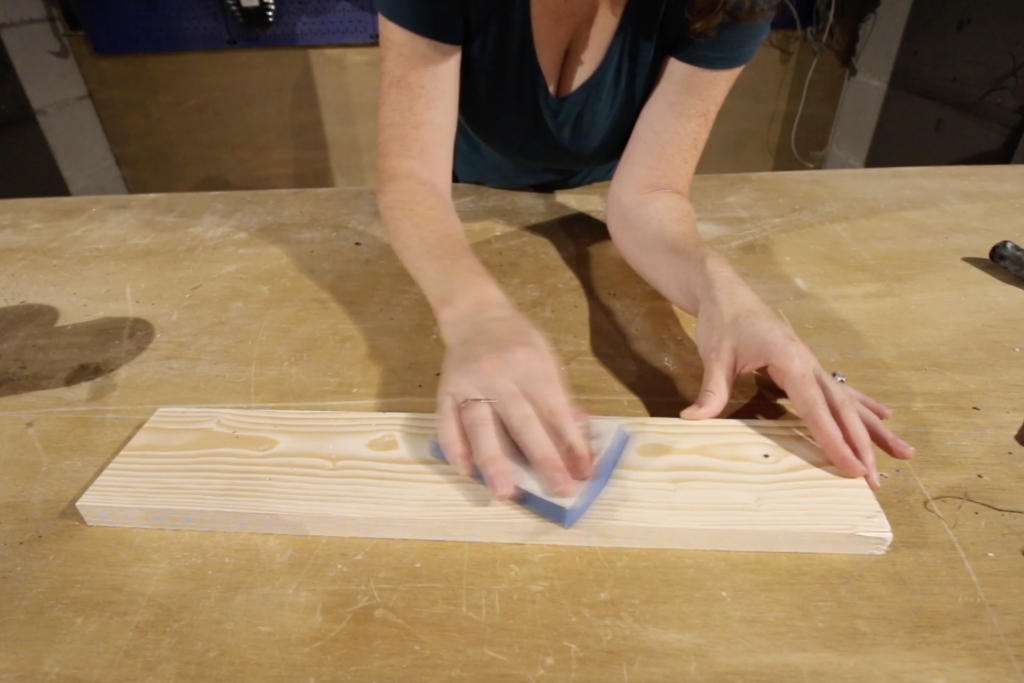
Step 5: How to sand wood filler
It is important to sand the dried wood filler for a seamless finish. Sanding helps level the filler with the surrounding wood, removes any excess material, and creates a surface ready for staining or painting.
Sand in a circular motion until the repair area blends perfectly with the surrounding wood.
If you did thick layers of wood filler or did a large area, you might prefer to use an orbital sander to make it easier on your hands.
What grit sandpaper do I use for wood filler?
I suggest using 220 grit sandpaper for the smoothest possible finish.
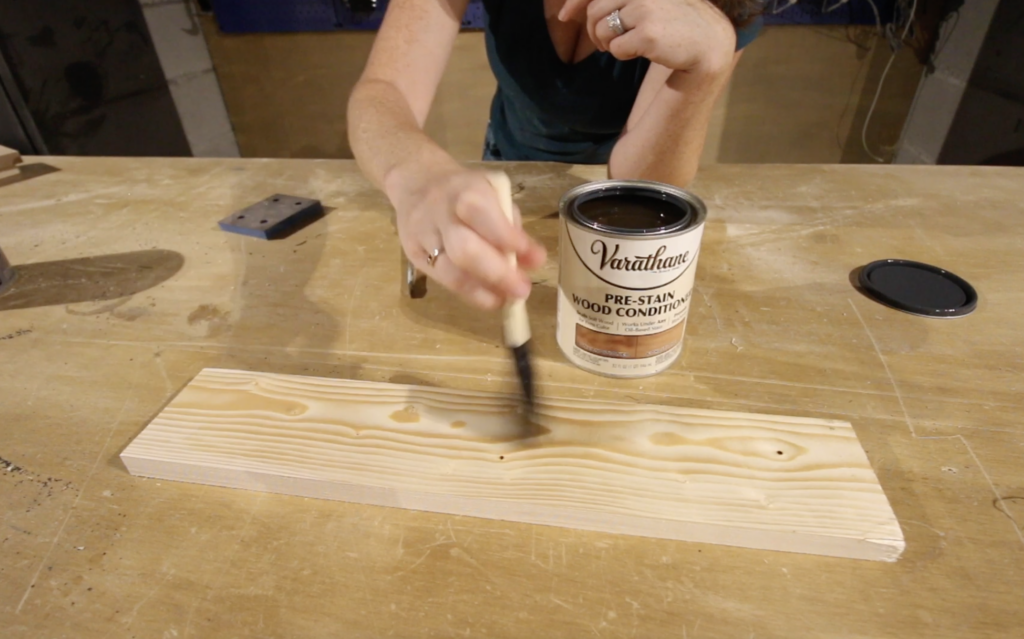
Step 6: How to stain or paint wood filler
One of the best parts of wood filler compared to wood putty is that it could be stained or painted to perfectly match the finished wood around it.
For wood filler that requires staining, you will want to apply your stain with a brush or lint-free cloth.
Be careful about getting wood stain on areas around the wood filler that have already been stained. You can quickly get into this vicious cycle where now those areas look darker because they got double stained.
So you might want to be a little careful around those areas or you could end up with a dark ring.
Apply your stain and then wipe off any excess that does not absorb after 15 minutes. You may need to do multiple coats.
Honestly, I have mixed feelings about stainable wood filler. I know that it is made with wood fibers in it that absorb the stain like regular wood wood.
However, I just think it never really looks right.
If it's a tiny little spot, like a crack or a hole I think you can pull it off. But just know if you were doing a large section of wood filler, and the stain doesn't look like normal wood that you were not doing anything wrong that's just how it is.
For paintable wood filler, once the area is sanded it can be painted just like normal wood.
Assuming that you sanded it perfectly level with the surrounding wood, you should get a pretty flawless finish with paint.
Step 7: Final Touches and Sealing
Be sure to seal the repaired area with an appropriate finish or protective coating to ensure longevity. We like to use polyurethane. Here's our guide on how to seal stained wood!
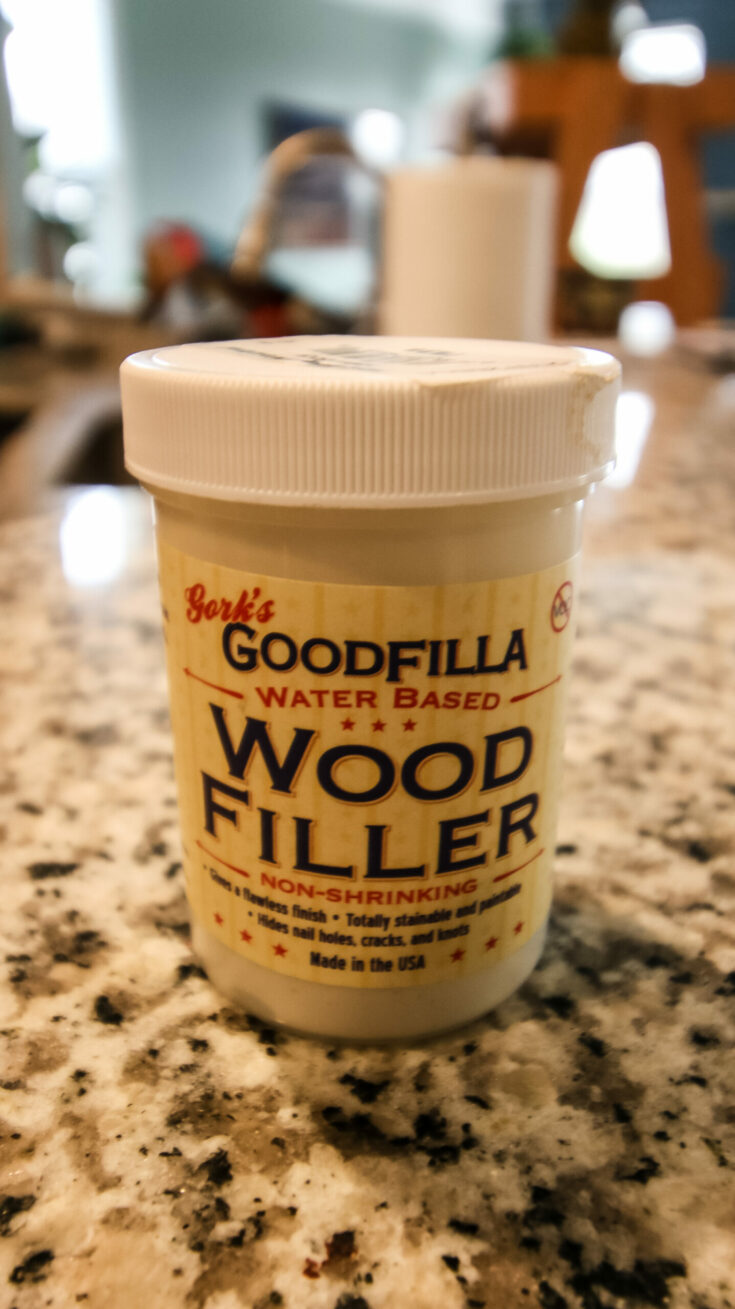
How to apply wood filler
Here's how easy it is to use wood filler to repair wood projects!
Materials
- Wood filler
- 220 grit sand paper
Tools
- Putty knife
- Sander (optional)
- Cloth or rag
Instructions
- Prepare the surface by sanding, then wiping clean with a cloth. You can use a shop vac to vaccuum first if it's very dusty.
- Put on gloves.
- Mix wood filler according to package instructions.
- Use putty knife to apply to damaged wood. Work it into any holes or cracks so there are no air bubbles.
- Smooth flat across the top with putty knife. Don't make it too flat - it will shrink a tiny bit. Slightly raised is fine.
- Allow to dry according to package instructions.
- Sand with 220 grit sand paper until smooth and flush.
- Wipe clean.
- Stain or paint.
- Apply sealant.
Recommended Products
As an Amazon Associate and member of other affiliate programs, I earn from qualifying purchases.
How to clean up wood filler
Each specific wood filler will have instructions on how to clean it up on the label. However, most wood filler is water based. Water based wood putty should clean up with water and a rag. Excess dried wood putty should be sanded or scraped off of wood surfaces.
Any more questions about using wood filler?
Looking for something?
We've been doing this since 2012 so we have a LOT of blog posts!
Search stuff like: Ceiling Projects | DIY Plant Stands | Thrift Flips


Hello, I'm Morgan, half of the creative force behind CharlestonCrafted.com! With a passion for DIY that dates back to 2012, I've transformed three homes and now I'm dedicated to helping others craft their dream spaces. Let's turn your house into a home together!


